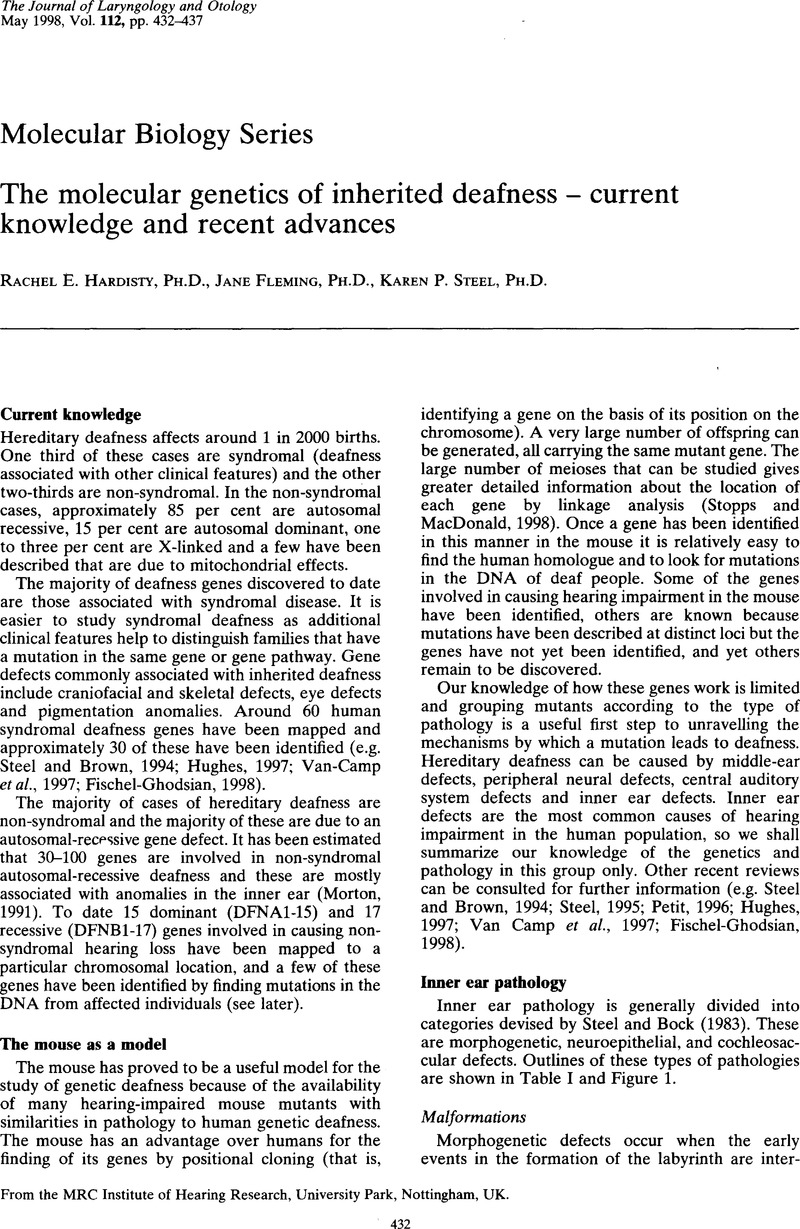Crossref Citations
This article has been cited by the following publications. This list is generated based on data provided by Crossref.
Fekete, Donna M.
1999.
Development of the vertebrate ear: insights from knockouts and mutants.
Trends in Neurosciences,
Vol. 22,
Issue. 6,
p.
263.
Walter, R.
and
Schaffner, A.
2000.
Vol. 23,
Issue. ,
p.
261.
Toivonen, Janne M
O'Dell, Kevin M C
Petit, Nathalie
Irvine, Sharon C
Knight, Gillian K
Lehtonen, Marjo
Longmuir, Mark
Luoto, Kaisa
Touraille, Sylvie
Wang, Zongsheng
Alziari, Serge
Shah, Zahid H
and
Jacobs, Howard T
2001.
technical knockout, a Drosophila Model of Mitochondrial Deafness.
Genetics,
Vol. 159,
Issue. 1,
p.
241.
Coppens, Angélique G.
Salmon, Isabelle
Heizmann, Claus W.
Kiss, Robert
and
Poncelet, Luc
2003.
Postnatal maturation of the dog stria vascularis— an immunohistochemical study.
The Anatomical Record Part A: Discoveries in Molecular, Cellular, and Evolutionary Biology,
Vol. 270A,
Issue. 1,
p.
82.
Coppens, Angélique G.
Gilbert-Gregory, Shana
Steinberg, Sheldon A.
Heizmann, Claus
and
Poncelet, Luc
2005.
Inner ear histopathology in “nervous Pointer dogs” with severe hearing loss.
Hearing Research,
Vol. 200,
Issue. 1-2,
p.
51.
2006.
Meyler's Side Effects of Drugs: The International Encyclopedia of Adverse Drug Reactions and Interactions.
p.
118.
2006.
Meyler's Side Effects of Drugs: The International Encyclopedia of Adverse Drug Reactions and Interactions.
p.
1920.
Counter, S. Allen
2010.
The Newborn Brain.
p.
163.
2016.
Meyler's Side Effects of Drugs.
p.
216.
2016.
Meyler's Side Effects of Drugs.
p.
334.



